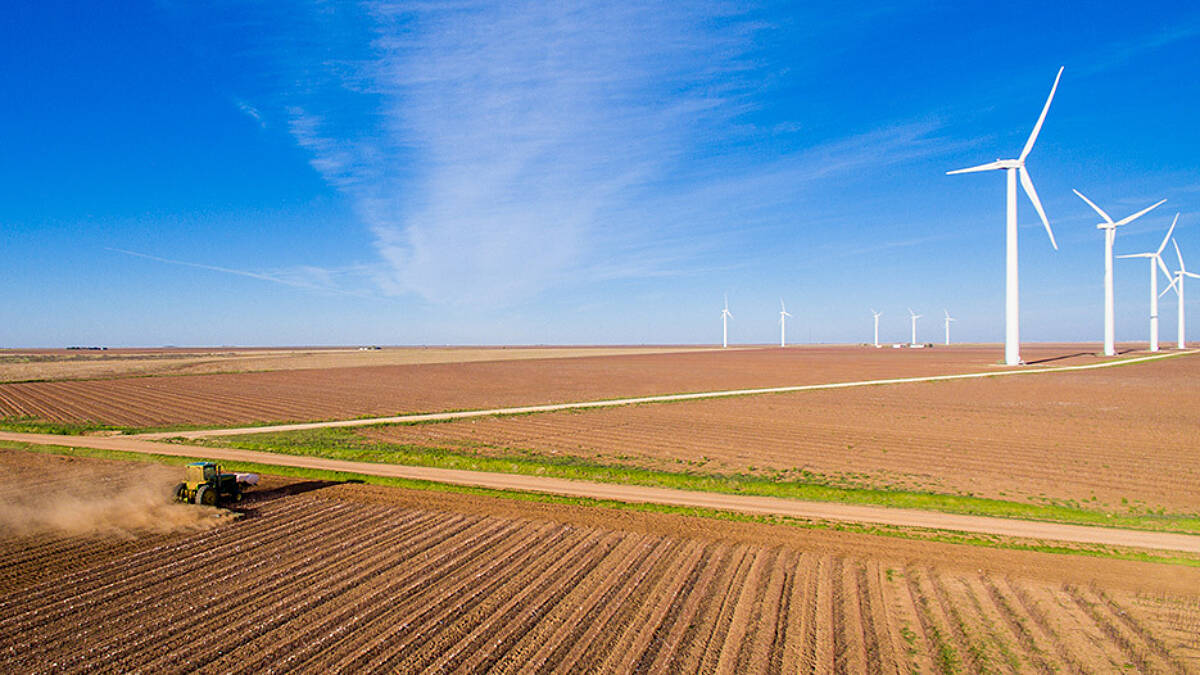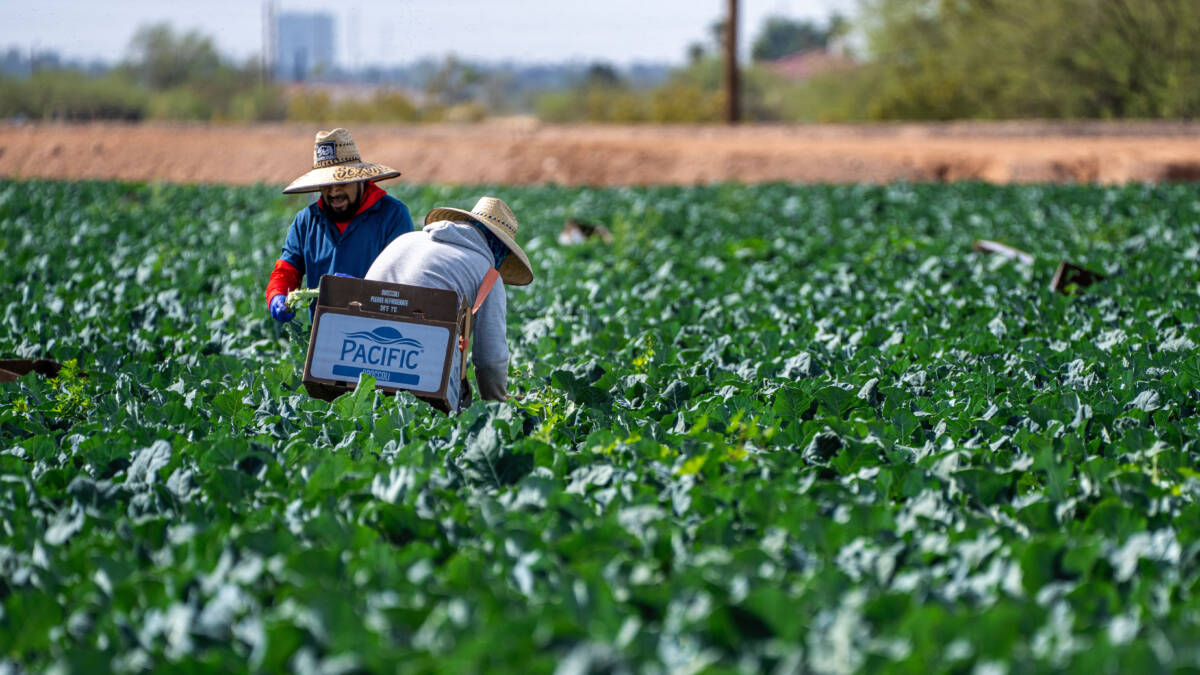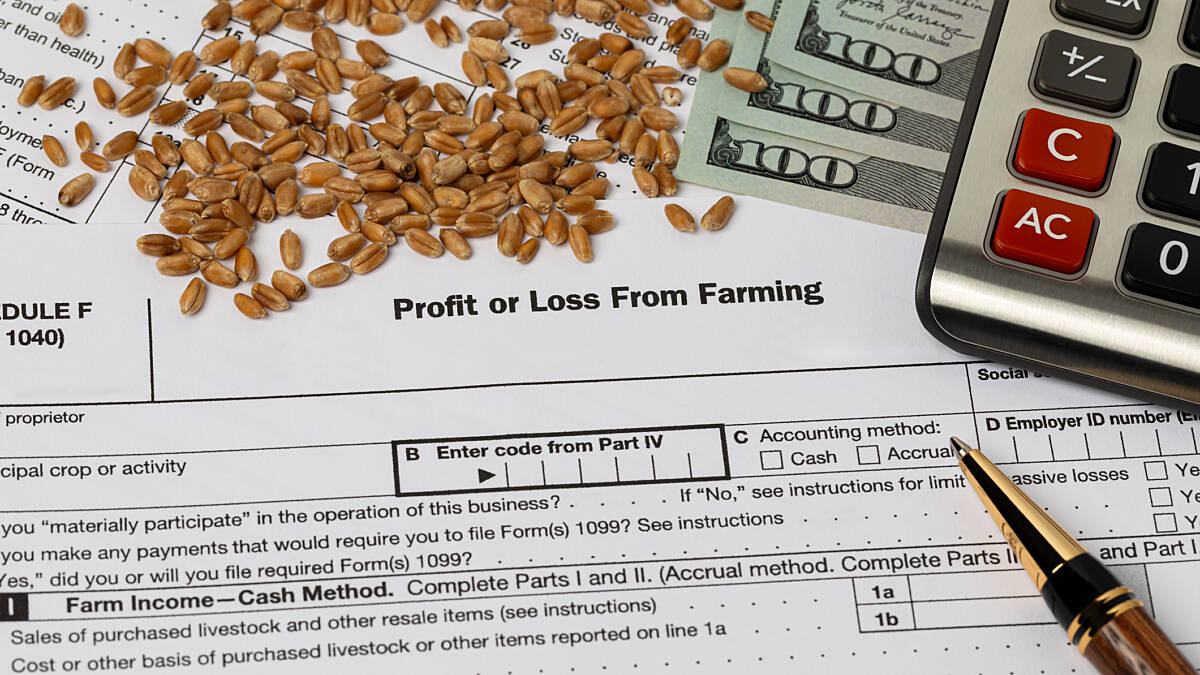
119th Congress Briefing Booklet

Just as the work of feeding our nation begins on the farm, we believe that’s where the policy shaping agriculture should begin as well. That’s why the American Farm Bureau’s work in Washington is driven by the policy priorities set directly by our grassroots members. Every year, Farm Bureau members in more than 2,800 counties meet to discuss and vote on policies affecting their farms, ranches and communities. Those policies then set the agenda for state Farm Bureaus and ultimately the American Farm Bureau. Our strength lies in our genuine grassroots approach, which has made us the Voice of Agriculture for more than 100 years. We believe that we are stronger when we work together as an organization and as a nation. Our team at the American Farm Bureau looks forward to working with you and your staff to strengthen agriculture and the communities across the country that depend on us.
The Economy, the Supply Chain and Inflation

Every American feels the push and pull of the economy. For farmers, it’s global market uncertainty and rising costs for many of their inputs. Broadening those effects to rural communities and we see the economic downturn. Like much of the rest of the world’s economic sectors, American farmers depend on functioning supply chains, both for their inputs and to market their products. This includes competitive processing markets, efficient transportation systems, affordable credit and a strong economy driving healthy demand for their products.
In recent years, the robust U.S. economy has been undercut by inflation and its impacts, including high interest rates that drive up farmers’ credit costs and threaten burdensome debt.
U.S. transportation infrastructure in the public and private sector has been undercapitalized, making it more difficult for farmers to physically move their products domestically, while global volatility has limited farmers’ access to some foreign markets.
Too few processors for some farm and ranch products undercuts the prices paid to farmers and can make food more expensive for consumers. Rising farm input prices also cut into farmers’ bottom lines.
Farm Policy

photo credit: Getty Images
No one buys insurance for the good times. Similarly, farm bill programs provide critical tools to help farmers and ranchers get through the bad times. Farm programs provide a basic level of protection to help offset the financial repercussions of severe weather and farm economy challenges, like plunging commodity prices. Farm policy brings certainty to farm and ranch families through crop insurance, improved risk management programs and support for beginning farmers and ranchers, while also providing much-needed funding for trade development and agricultural research.
Why Farm Policy Matters:
- Food Security: America’s public investment in agriculture through farm bill programs helps secure our domestic food supply and keep our country strong while consumers get the benefits of high-quality food.
- Jobs: The food and agriculture industry supports nearly 24 million U.S. jobs (that’s more than 15% of U.S. employment) and contributes more than $1.5 trillion to U.S. gross domestic product.
- Conservation: The farm bill’s investment in ag research and conservation programs are critical to ensuring productivity and sustainability on our farms and in our domestic food supply.
- Risk Management: We all depend on the success of American agriculture so it’s important for America’s farmers and ranchers to be supported by strong farm programs as they face weather disasters, high supply costs and inflationary pressures. Managing risk is critical to keeping food on our tables.
- Addressing Hunger: The farm bill includes nutrition programs intended to ensure the most vulnerable among us have access to healthy food.
Farm Economy
In addition to the economic impact of inflation and prolonged trade disputes, frequent catastrophic natural disasters such as wildfires, hurricanes, droughts and excessive flooding have caused damage to both crops and livestock and made it difficult for farmers to plant and harvest crops. Declining cash receipts and increasing expenses, like record costs for labor, interest, and taxes, along with reduced government support, continue to present significant challenges for U.S. farmers, who remain financially vulnerable as they head into another difficult year. Net farm income has declined in back-to-back years, falling a forecasted 23% since 2022. High interest rates and macroeconomic instability threaten farm solvency, with total farm debt increasing 11% in two years.
Food Security
In the face of unprecedented challenges and shifts across the supply chain in recent years, America’s farmers and ranchers faithfully answered the call to produce a safe and sustainable food supply for our country, as they always have. We did not do this work alone, but kept our nation fed thanks to essential workers across the supply chain, from employees on the farm to meatpacking plants to the local grocery store.
No one should go hungry in America. Protecting our domestic food supply is critical to the well-being of all Americans, from our urban centers to our rural townships.
If the 118th Congress does not reauthorize the farm bill, it will be incumbent upon the 119th Congress to pass an updated farm bill as quickly as possible. The farm bill is a critical tool for ensuring our nation’s food supply remains secure. Funding for this comprehensive package, which could more accurately be called a food and farm bill, includes risk management tools for farmers, access to nutrition for low-income families, conservation programs and investments in agricultural research.
Even in the worst of times, our domestic food supply remains secure thanks to our national investment in agriculture.
Sustainability
U.S. farmers and ranchers are at the forefront of climate-smart farming, putting scientific solutions, technology and innovation to work to protect our land, air and water. Farmers aren’t just adopting eco-friendly solutions: they’re also growing solutions through clean, renewable energy on the farm.
Farmers and ranchers continue to look for innovative solutions to improve farm production and minimize their environmental footprint. The next steps toward sustainability goals must recognize the achievements across agricultural sectors and build on the unique role farming and ranching plays in a balanced ecosystem.
Nothing is more important to agriculture’s sustainability than increased productivity: since 1948, U.S. farmers have nearly tripled production while the amount of resources used (including land, energy and fertilizer) has decreased. For perspective, 35 years ago, farmers would have needed nearly 115 million additional acres to harvest the amount of corn, cotton, rice, soybeans and wheat produced today.
If U.S. agriculture is going to continue to lead the way in sustainability, our nation must prioritize its investment in ag research and innovation and give farmers the freedom to build on their sustainability efforts through voluntary, market-based programs.
Natural Disasters
Weather-related natural disasters (i.e., hurricanes, wildfires, flooding and drought) pose risks to livestock and crops. Crop insurance is a crucial tool producers use to manage their risk, and it continues to evolve to help cover the losses associated with disasters. Other disaster assistance programs through the Farm Service Agency are slow, uncertain and can be too late to help farms survive the losses. Therefore, when necessary and until crop insurance is strengthened to help mitigate the losses from natural disasters, supplemental ad-hoc assistance is necessary to promote farm-level stability.
Research and Innovation

photo credit: Getty Images
Research and innovation are the foundation for the food system’s growing focus on decreasing waste and increasing sustainability. If we are to continue to achieve these goals, investments in agricultural research and paving the way for the next generation of American farmers and ranchers will be essential. Agricultural productivity growth is key to the economic, environmental and social sustainability of agriculture, and public and private research investment is vital to this continued growth.
Biotechnology
Biotechnology helps reduce water, fertilizer and pesticide use, allowing farmers to manage their land, crops and livestock for better soil, water and air quality while growing more food. Today, more than 90% of corn, cotton and soybeans grown in the U.S. have been improved through biotechnology, and farmers are choosing biotech traits when growing other crops such as alfalfa, sugar beets and canola.
Despite rapid adoption by farmers and a strong scientific consensus that biotechnology does not pose health or environmental risks, regulatory burdens are slowing research and innovation of new biotech traits and restraining U.S. farmers’ international competitive advantage. In addition, activist groups routinely undermine new tools and advancements by blocking science-based regulatory decisions, filing lawsuits and advocating for labeling mandates.
Farmers have always bred crops and animals to draw out traits that make them more wholesome and sustainable. Gene editing holds the promise of unlocking tremendous benefits for consumers and the environment, while assisting farmers in growing healthier, more sustainable food, fiber and fuel.
Energy

photo credit: iStockPhoto
A diverse, domestic energy supply is important to fuel America’s economic growth and prosperity while strengthening our energy security. Further development and use of all domestic energy sources including renewable energy such as ethanol, biodiesel, renewable diesel, sustainable aviation fuel (SAF), biomass, solar and wind are critical to our nation’s energy future and will help further strengthen the overall national security of the United States.
Farm Workforce

photo credit: Mark Stebnicki, North Carolina Farm Bureau; used with permission.
American agriculture is at a critical juncture. To keep our farms running, we need reliable access to a skilled workforce to ensure the ongoing security of our nation’s food supply.
Agriculture labor reform requires a two-pronged approach.. One, there needs to be a path to legal status for current workers who serve alongside farmers on the frontlines of our essential industry. Two, Congress needs to implement an effective, comprehensive guest worker program that is accessible to all of agriculture, without compromising a farm’s ability to compete in the marketplace.
Farm Bureau is working for reform that includes:
- A flexible, economic visa program, accessible to all of agriculture that allows foreign-born workers to enter the U.S. temporarily to work on farms.
- Provisions that allow skilled laborers currently working in agriculture to earn an adjustment in status and remain working in the U.S.
Ensuring farmers have access to the safety equipment and resources they need to promote the health and wellbeing of their employees is also important.
Tax Reform

Farms and ranches are capital-intensive businesses that typically operate on thin profit margins, often made thinner by unpredictable market prices and uncontrollable weather conditions. The Tax Cuts and Jobs Act gave farmers and ranchers a tax structure that helps them navigate their challenging business climate. But many of the TCJA provisions expire at the end of this year, including the pass-through provisions. Failure to make these provisions permanent will result in a tax increase for farmers and ranchers and leave them with fewer ways to deal with the unpredictability of their businesses.
Trade

photo credit: Getty Images
With the challenges American farmers and ranchers face, an active trade agenda that expands market opportunities is critical. Increasing exports with existing trading partners and developing new opportunities are necessary to help revive the agricultural economy and to make agricultural trade again a leading component of broader economic growth.
Expanding international market access for farmers and ranchers is also critical to the health of our national economy. According to USDA, in 2022 each dollar of agricultural exports stimulated another $2.09 in domestic economic activity. In 2022, $197.4 billion of agricultural exports produced an additional $214.6 billion in economic activity for a total economic output of $412 billion. Agricultural exports in 2022 supported 1.25 million full-time civilian jobs.
American-grown products are valued worldwide. Too often, however, non-scientific trade barriers stand in the way of U.S. farmers and ranchers bringing their products to new international markets. Moreover, non-tariff trade barriers, foreign currency devaluations, trade-distorting foreign subsidies and dumping on global markets make many U.S. agricultural products less competitive in global markets and in some cases domestically.
Free trade agreements have opened the doors for U.S. farmers in 20 countries, and trade to those countries made up 47% of our agricultural exports in 2023. Trade deals like USMCA and the U.S.-Japan Trade Agreement have set the stage for modern trade agreements that enhance science-based standards in relation to agricultural biotechnology and gene editing. We believe U.S. agriculture can continue to lead the way in global exports with free trade agreements that open doors to new and expanding markets.
Government Functions & Administration

photo credit: Getty Images
Federal Lands
Federal land-use decisions should enhance cultural, agricultural, economic and environmental interests at the local level, and include and respect historic management activities, stakeholders, and state and local government management plans. The multiple-use concept of federal land management provides that federal land management agencies (including the Bureau of Land Management and U.S. Forest Service) manage land resources for a variety of uses including livestock grazing, timber harvesting, energy development and recreation.
Regulatory Reform
Farmers and ranchers have a tsunami of requirements coming at them from regulations and court rulings at the local, state and federal levels. Everyone — farmers and ranchers, lawmakers, regulators, environmentalists and state and county officials — will benefit from a reformed regulatory process that allows for earlier input and greater stakeholder involvement, takes economic impacts into account and respects farmers’ rights. Farmers and ranchers manage natural resources for the long-haul, preserving their land for the next generation. It’s time the regulatory process more accurately accounts for agriculture's positive impact by focusing on the contributions farmers and ranchers make to our communities and the environment.
Lack of coordination between agencies creates uncertainty for farmers and food production. For example, EPA must better coordinate with USDA, state regulatory partners and the agricultural community to ensure readily available access to critical crop protection tools with long-standing regulatory approvals. The existing process creates uncertainty, lack of confidence in federal oversight and added costs for farmers.
Clean Water Act
Farmers and ranchers play a leading role in protecting our nation’s water quality and wetlands. Thanks to modern farming practices and precision farming tools, farming practices are more environmentally protective than ever. Clean water is a top priority for farmers and ranchers, and we stand by common sense rules and practices to achieve that goal.
The Clean Water Act works best when policies lead to sound management of natural resources to improve water quality and increase agricultural land value and productivity. Scientifically developed farming practices improve the environment, reduce pollution and improve productivity while reducing costs.
The success of the Clean Water Act is based primarily on the partnership between the federal government and states. Those partnerships balance environmental protection and economic priorities effectively and broadly protect the nation’s waters. Future progress will hinge on collaboration and conservation incentives as well as market-based and watershed-specific approaches.
Additionally, it is essential for farmers and ranchers to clearly understand the jurisdictional reach of the Clean Water Act. The confusion surrounding compliance efforts has persisted for many decades and our members require clear rules to run their businesses. Simply put, clarity and certainty are paramount.
Emerging Contaminants
Farmers and ranchers have been navigating the concerning impacts that emerging contaminants, such as PFAS, are having on farm fields. While these contaminants do not originate and are never used in farm operations, they have made their way onto farm fields, through no fault of farmers. Farmers should not be made to suffer the consequences when these materials are found on their land.
Our nation’s farmers depend on the health of their land — without it they cannot produce the food, fuel and fiber our country depends on. If the land we own and operate is designated as “contaminated,” it would annihilate land values and bring productivity to a screeching halt. Plummeting property values and income and other operational losses that farmers and ranchers have and will continue to face could put affected farm families out of business.
Endangered Species Act
Farmers, ranchers and environmentalists agree that we must protect and recover wildlife facing extinction. But with a recovery rate of less than 3%, the Endangered Species Act has fallen short of its primary goal. While the ESA has fallen behind, the U.S. has seen a boom in conservation awareness and effective voluntary programs and practices at the state and local level. For example, today, nearly 77 million acres of U.S. farmland are used for voluntary conservation reserve and wildlife habitats.
We believe that conservation functions best as a private-public partnership at the local level. Endangered and threatened species can be protected by providing incentives to private landowners and public land users, rather than by imposing land use restrictions and penalties.
Packers and Stockyards Act
The Packers and Stockyards Act (PSA) is the law by which USDA enforces fair and transparent competition for healthy and competitive markets for livestock producers and poultry growers. Recent PSA changes provide contract poultry growers more transparency as it relates to how they operate their business. We believe that future modifications to the PSA should be limited in scope and apply to each species’ individual market, and not more broadly across species, as USDA has proposed in the past.
Rural Communities

photo credit: Getty Images
Rural communities play an important role in our nation’s economy as they are home to most U.S. manufacturing, farming and ranching.
Infrastructure
The American economy and way of life depend on modern infrastructure for roads, bridges, waterways, technology and more . Deteriorating rural infrastructure, however, threatens the health and well-being of rural Americans as well as the competitiveness of U.S. agriculture. Farmers’ and ranchers’ ability to meet our nation’s nutritional needs and compete in the global marketplace depend on continued investment in a robust and reliable infrastructure including:
- Roads
- Inland waterways
- Ports
- Railways
- Broadband
- Western water storage and delivery
Rural Broadband
Rural broadband is essential to modern agriculture and the quality of life for rural Americans. Farmers and ranchers depend on broadband just as they do highways, railways and waterways. However, 15% of U.S. farms have no access to the internet, according to USDA’s “Farm Computer Usage and Ownership, 2023” report. In 2024, the Federal Communications Commission found that over 25% of rural Americans lacked fixed broadband at speeds of 100/20 Mbps.
Lack of access to rural broadband puts farmers, ranchers and rural residents at a disadvantage by hindering the deployment of precision ag technology, limiting access to educational opportunities and telehealth, and constraining health care facilities and services, among other impacts. Rural Americans should be able to safely access the same essential services as their urban and suburban peers.
Current and future generations of rural Americans will be left behind their fellow citizens if they are without affordable high-speed broadband service that enables them to tap into health care and education services, government agencies and new business opportunities. Federal investment in broadband deployment must effectively target unserved and underserved areas.
Rural Stress and Mental Health
Farmers and ranchers continue to feel the harmful effects of stress brought on by many factors that are out of their control, such as labor shortages, increasing costs for fertilizer, fuel and other inputs, extreme weather events and many other challenges. A 2019 Farm Bureau survey shows that an overwhelming majority of farmers and farmworkers say financial issues, farm or business problems and fear of losing their farm negatively impact their mental health. We need to reduce the stigma surrounding the topic of mental health in rural communities and provide relevant information to farm families on this important topic. To build a sustainable future for agriculture for our nation and our world, we must promote the wellbeing of our nation’s farmers and ranchers.